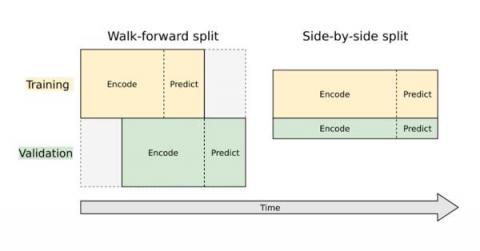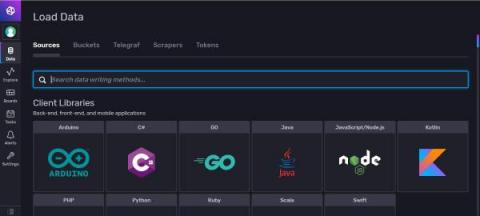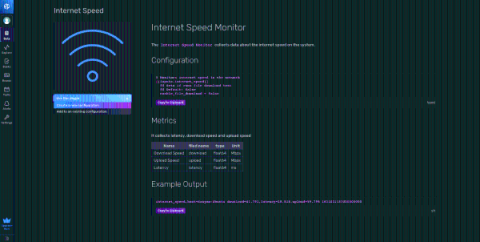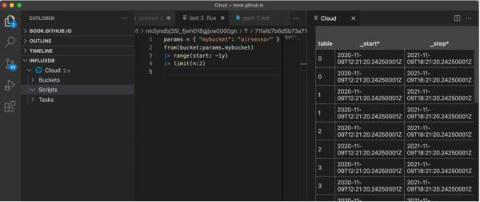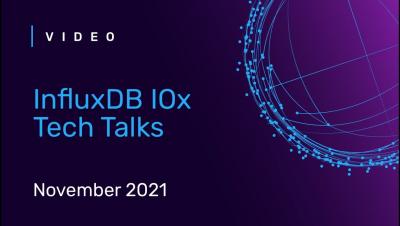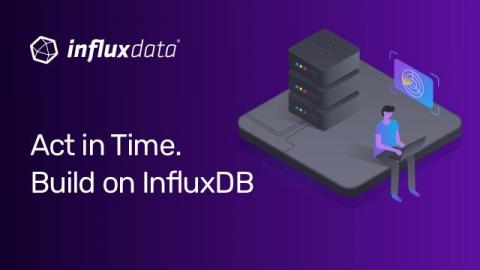Operations | Monitoring | ITSM | DevOps | Cloud
November 2021
Introduction to Time Series Forecasting with Tensorflow and InfluxDB
Wouldn’t it be nice to be able to perfectly predict the future? We are a long way from being able to do that, but that is basically the goal of anybody working in the data science field — take a bunch of historical data and then try to make future predictions based on that data.
IoT Monitoring with InfluxDB
What is 'Time to Awesome'?!
Getting Started with Go and InfluxDB
Conventional databases such as PostgreSQL or MongoDB are great at safekeeping the state of your system in a tabular or document format, but what about time-dependent data: systems metrics, IoT device measurement or application state change? For those things, you need a more suitable type of database, one designed to manage better semi-structured data with a time characteristic.
Notebook Sharing
It’s that season of sharing, and in the spirit of sharing, we have a new feature to share with you — notebook sharing. Now you can take your favorite InfluxDB notebooks and share them with whoever you would like. They don’t need to have an InfluxDB Cloud account. They just click on the link you share with them, and they can see the notebook that you shared, for the time range that you selected.
Monitoring Your Smart Home with InfluxDB and IFTTT
Do you have a bunch of smart home devices, such as IoT devices like smart switches, cameras, doorbells, alarm systems or appliances? Have you ever wanted to monitor and send events from those devices to InfluxDB? And wouldn’t it be amazing if you could do that with zero coding? With IFTTT Webhooks, you can! Let’s dive in.
How to Monitor Your Internet Speed with Telegraf & InfluxDB Cloud
Complaining about your crappy internet speed is a tale as old as time. Given the rapid shift for so many of us to work from home, our internet speed now affects us on a daily basis. Where in my house should I avoid taking Zoom meetings because of low download speed? Does my internet speed actually get worse in the evenings, or am I just paranoid? How far away from the microwave do I really need to be to ensure that my wifi isn’t impacted?
InfluxDB and GeoData - Emergency Generators
With the widespread use of LTE (Long Term Evolution), we are seeing more IoT devices come online in remote regions of our planet. Picture this scenario: A country is currently experiencing a national emergency due to an electrical grid failure. To mitigate the power shortage the government has deployed generators in the remote regions of their country to power the most remote villages. The problem? The villages are still reporting outages due to the emergency generators running out of fuel.
TL;DR InfluxDB Tech Tips: API Invokable Scripts in InfluxDB Cloud
If you’re familiar with InfluxDB Cloud, then you’re probably familiar with Flux already. Flux enables you to transform your data in any way you need and write custom tasks, checks, and notification rules. But what you might not know is that InfluxDB Cloud now supports API Invokable Scripts in Flux.
The Impossible Dream: Easy-to-Use, Super Fast Software and Simple Implementation
How to Get Started with JavaScript and InfluxDB
This article was written by Nicolas Bohorquez and was originally published in The New Stack. Scroll below for the author’s picture and bio. Telegraf is the preferred way to collect data for InfluxDB. Though in some use cases, client libraries are better, such as when parsing a stream of server-side events. In this tutorial, you’ll learn how to read a data stream, store it as a time series into InfluxDB and run queries over the data using InfluxDB’s JavaScript client library.
Docker: Run Telegraf as non-root
The Telegraf 1.20.3 release changed the official Telegraf DockerHub image to no longer run the Telegraf service as root. With this change, the Telegraf service runs with the least amount of privileges in the container to enhance security given the wide extensibility and array of plugins available in Telegraf.
How to Parse JSON with Telegraf into InfluxDB Cloud
In Telegraf 1.19 we released a new JSON parser (json_v2). The original parser suffered from an inflexible configuration, and there were a handful of pretty common cases where data could not be parsed. While a lot of edge cases for parsing can be resolved using the Starlark processor, it is still a more advanced approach that requires writing scripts. We have made a lot of enhancements to the new JSON parser that can help you easily read in your JSON data into InfluxDB.
Time Zones in Flux
As a language for processing time series data, Flux has an important role in how we understand that data. As we create and process data, we do it for ourselves and others. The concept of time and how we as people interact with time isn’t always simple.



